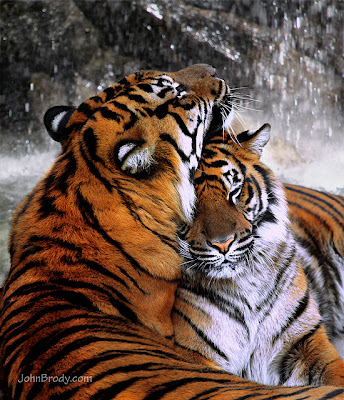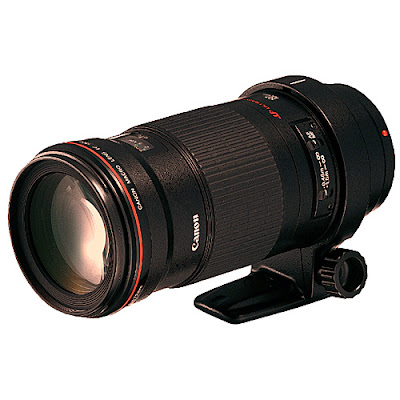Wildlife photography is one genre of photography where photographers find themselves in the remotest corners of the world. Proper understanding and planning of the gear to carry on each trip is vital, as once you are out there, there is no way you could get hold of something you have missed. And if you carry a load of things that you do not necessarily use on the trip, you will always feel the burden of dead weight for the length of the trip as you haul yourself and your gear through treacherous terrain in some the most inhospitable places.
 |
| Photo By Jayanth Sharma |
This article is intended for beginners in wildlife photography and aims to give an idea or rather an introduction to the kinds of gear with which one could get started in wildlife photography.
As mentioned in the first paragraph the photographer should have a proper understanding of the photographic capabilities and limitations of each and every piece of equipment he possess and take wise decisions on what is absolutely necessary on each trip. He / she should consider the weather, type of forest, what is the main aim of the shoot; is it big mammals, small mammals, birds, insects, reptiles, amphibians, flora etc. Where do one stay, does the place have electricity, also do consider the terrain, and how long will be the trek each day and also the duration of the trip.
Choice of Camera – Full Frame Vs Cropped Sensor
The larger sensor size of the full frame cameras give them better image quality, better low light performance and also increased dynamic range when compared to their APS-C counterparts. But when it comes to wildlife photography a cropped sensor camera has its own advantages. The major advantage is the crop factor itself as it gives more reach for your lenses for example the most widely used Canon lens among wildlife photographers is the 100 – 400 f 4.5-5.6 L IS USM. The same lens when mounted on a crop sensor camera will give the field of view equivalent of a 160-640mm lens.
 |
| Canon 1dx camera |
Second factor is the arrangement of auto focus points. In a full frame camera the auto focus points are all located more towards the centre, but in case of crop sensor camera they are more evenly distributed across the frame. This could be advantageous in certain situations like when photographing birds in flight.
Compact Cameras with Zoom
Advancements in digital technology and optics have now made it possible for manufacturers to launch a number of super zoom compact cameras. There are super zoom compacts that have upto 30x zoom. Remember 10x is equivalent of 300mm, so 30x gives you the reach of 900mm tele photo lens.
 |
| Olympus super zoom compact camera |
But as far as photographing is concerned these compacts are only good for those who are absolute beginners in wildlife photography and would want to test it out first before investing heavily in camera and gear. Let us discuss some of the disadvantages of super zoom compacts for photographing wildlife.
First and foremost factor working against compact cameras is the shutter lag. Even though modern cameras have significantly improved shutter performance, they are still no match for a dslr.
Second is the speed of auto focus, when photographing wildlife many a times you will only get a window of a few seconds to photograph your subject, so the speed at which your camera can auto focus is critical to capture the precise moments.
Third is the low light performance capability of the camera. Typically all forests have very little light and most of your subjects will be under shade, or you will be spotting them either in early mornings or during late evenings when there is very little light. Low light performance capabilities of compact cameras which have small sensors is way below their DSLR counterparts.
Fourthly when using a dslr you have the ability to use fast lenses, but the minimum aperture setting on most compacts are f/4 or so and there is no way you could improve upon it.
Fifth is the picture quality. You simply cannot compare the picture quality generated by the small sensor cameras with that of DSLR’s that have much larger sensors.
Sixth point is usability; even though you have the reach equivalent to that of a 900mm lens, the slower zoom function in combination with the slower auto focus performance and the necessity to use a tripod to avoid camera shake at such long focal lengths make the picture taking process a very tedious one. On top is the factor that most super zoom compact cameras are a bit soft at their longest zoom range.
Having said all this there is no denying the fact that these super zoom compact cameras are great value for money, is unrivalled in ease of use and are great for people who wish to get started with wildlife photography.
Megapixels – Fact or Myth
It is a common misunderstanding that larger the megapixel count; the better the image quality delivered from the camera. The number of megapixels has nothing to do with the image quality of the camera. However having more megapixels in your files is advantageous as it lets you crop you image and still get a file of usable size. For example when using a 24mp digital camera you could crop out 2/3rd of your frame and the remaining 1/3rd of the image will still be a file of 8mp. This is very useful in many situations for example when your lens falls short of reach.
 |
| Photo By John Brody |
One Lens Does it All
All major camera manufacturers have these so called super zoom lenses in their lens line up. They go from wide angle to medium telephoto range. Most commonly used ones are lenses like Canon 55 – 250mm, Nikon 55 – 300mm, Tamron 18 – 270mm etc. These lenses are great in their ease of use, they allow you to travel with only one lens, means taking up less space in your luggage, also no need to worry about changing lenses, they are also very light weight provide decent image quality and are also comparatively cheap to own.
 |
| Canon 55 - 250 mm zoom lens |
Tele Photo Zoom Lenses
Tele photo zoom lenses like the Canon 100 – 400, Sigma 150 – 500, Nikon 80 – 400 are the most preferred lenses used by serious wildlife photographers worldwide. They all start at the tele photo range and go up to super tele photo. They also provide excellent image quality and added features like multi stage image stabilization, making it easier to hand hold.
 |
| Canon 100 400 tele lens |
Super Tele Photo Lenses
Fixed focal length super tele photo lenses like the 600mm, the 800mm etc are the ultimate weapons when it comes to photographing wildlife. The longer focal length allows one to shoot elusive animals from a distance, without disturbing them by getting close. Also these lenses have maximum apertures of f/4 or f5.6 which are great for their focal lengths and thus allow shooting in low light situations. The other characteristics of these super tele photo lenses are their build quality, weather sealing, unmatched picture quality, sharpness, and colour rendition, Image stabilization feature etc. However most of these lenses are prohibitively expensive and the purchase of one could only be justified only if you are a serious enthusiast and have such kind of money to spare.
 |
| Canon 600mm super telephoto lens |
Teleconverters for Added Reach
Teleconverters are used to multiply the focal length of the lens used. They are available in 1.4x and 2x versions. Using 2x teleconverter over your lens actually doubles your lens focal length. For example a 200mm lens when used with a 2x teleconverter will give a focal length equivalent of 400mm. however there are downsides to using a teleconverter. The added lens elements in the converter slightly degrade the picture quality and using a 2x teleconverter causes a 2 stop decrease in the lens aperture. So effectively your 200mm f/2.8 lens with 2x converter becomes a 400mm f/5.6. The problem is more when using converter with lenses having higher minimum apertures. For the auto focus mechanism in cameras to work the lens should ideally have a minimum aperture of f/5.6 or more. Even for lenses with f/5.6 as minimum only the center auto focus points could be used. This depends on the camera body too. But it is good to remember that using tele converters on certain lenses would not let you use the auto focus feature.
 |
| Canon 2x teleconverter |
Macro Lenses for Tiny Subjects
Lenses that have a magnification factor of 1:1(life size magnification) or more is called macro lenses. They could focus at very close quarters and are ideal for taking photos of tiny insects and other subjects. They are available in different focal lengths, the most common being 50mm, 60mm, 90mm, 100mm, 180mm etc. Longer focal length gives the power to work at longer distances highly improving your chances of getting good frames. However they tend to be more expensive than others who are of shorter focal lengths, lenses like the 90mm, 100mm etc also make good portrait lenses.
 |
| Canon 180 mm macro lens |
To be a successful wildlife photographer it is essential to have good knowledge of your subjects and also your equipment. Choose wisely and carry only the things that you will actually use in the field.
In the next article we will discuss about Photography – Nature and Wildlife Photography – Accessories for Wildlife Photography
In the next article we will discuss about Photography – Nature and Wildlife Photography – Accessories for Wildlife Photography
Post a Comment